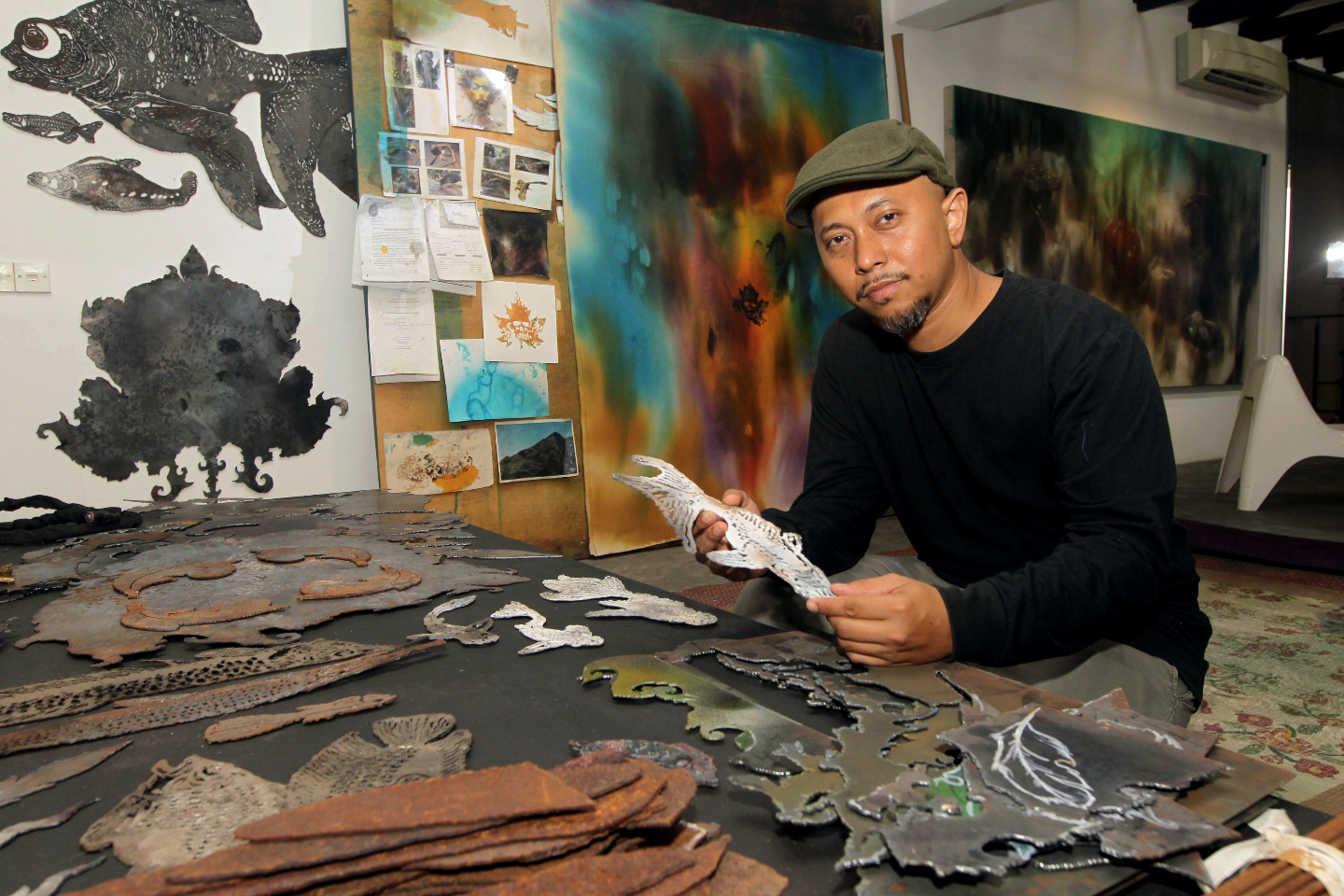
Haafiz was notably acknowledged as a pioneer in this art form when he introduced it during his first exhibition in 2014 (Photo: Haris Hassan/The Edge)
Haafiz Shahimi is a man who plays with fire. The visual artist, who specialises in pyrography printmaking, mesmerises as he harnesses flames to burn imprints onto canvas, as if in a dance with the flickering fire, before he puts it out with a swipe of his hand.
We get a glimpse into this unique process at Core Design Gallery, where Haafiz is holding his second solo exhibition, AWAS. For this, he has temporarily moved his studio to the space, making his self-developed style part of the showcase.
While there are a number of local and international artists who work with pyrography, few have experimented or developed their technique to the point this emerging artist has. There is Etsuko Ichikawa, who uses molten glass as a drawing brush, and the famed Cai Guo-Qiang, who works with gunpowder.
sleeping_beauty_day_2019.jpg
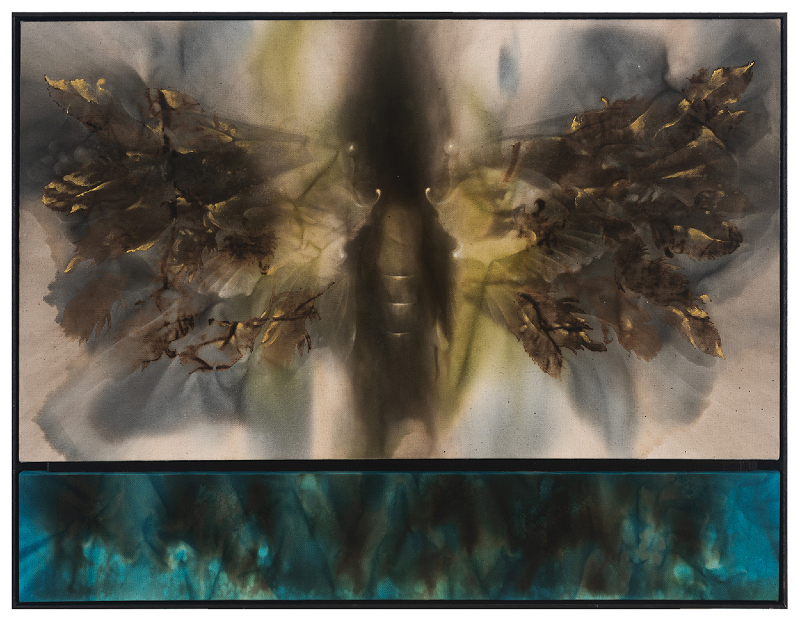
Haafiz’s works distinctively resemble paintings. In fact, to the untrained eye, they often look like a blend of watercolour and ink works, which speaks of the complexity of the pyrographic images. It is a technique he has developed over a decade, with the last five to six years showing particular growth and evolution.
“A lot of my new works in this exhibition couldn’t have been done back in the day, either because the technology wasn’t out yet, or my experiments weren’t complete yet, and the ideas weren’t mature enough. So AWAS is kind of like a reincarnation or rebirth of my previous, older works, now coming into this body and form, fully using pyrography,” explains Haafiz as we examine his newer pieces.
The work that encapsulates the artist’s current maturity in technique most evocatively is the first piece one spots as one walks into the gallery. Titled Self-Less, the fiery and dramatic self-portrait, rendered on layered jute, combines both his signature metal plate “chops” with the use of 90-degree inverted burn and direct petrol burn, a process where he sprays petroleum directly onto the material, then sets it on fire.
hh-_haafiz_shahimi_self-less_2019.jpg
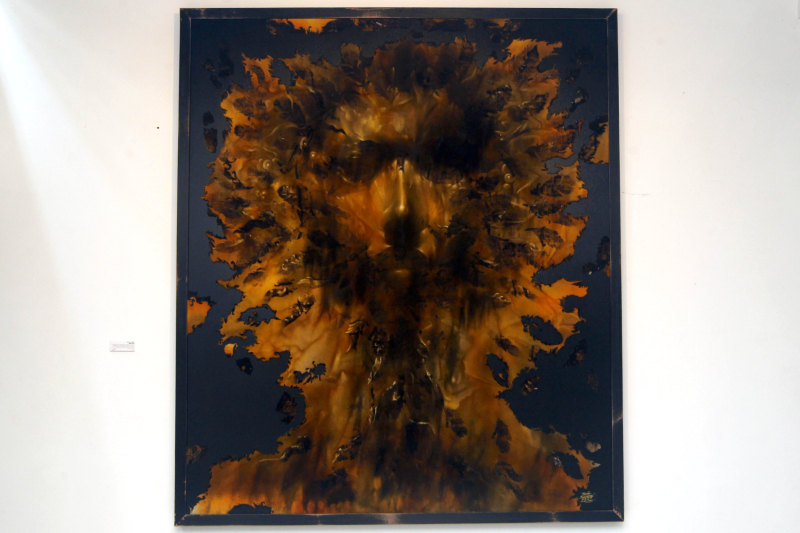
“There’s an interesting story behind this. An older version of this work is called Self-Fish, which was the first time I worked with jute. The experience really changed me; it opened up a lot of possibilities for me in making works of this style,” recounts Haafiz. Where he used charcoal and ink to complete the image in that piece, Self-Less is almost entirely made using pyrography, with only dye employed to prep the jute and gold paint, and pencil sketches to add finishing touches to the large work.
It also represents a philosophical milestone in his journey as an artist. “Less is to be humble. The work is, for me, [symbolic] of how far I’ve come. I believe when you just work hard, lessen your sense of self, your ego, to not let it get in the way, you’ll get there.”
As one walks through AWAS, the increasing depth and sophistication of imagery becomes apparent in the more recent works. Haafiz points out, “In the first ones, there is always a certain rawness, which I think is appealing in its own way, but the second or third ones are more advanced. For me, the hardest part of the process is to come out with the image itself, not the technical aspect of creating it. I find that the more complicated the imagery, the more a sense of visual richness comes through when it comes to using pyrography.”
pohon_berangan_i.jpg
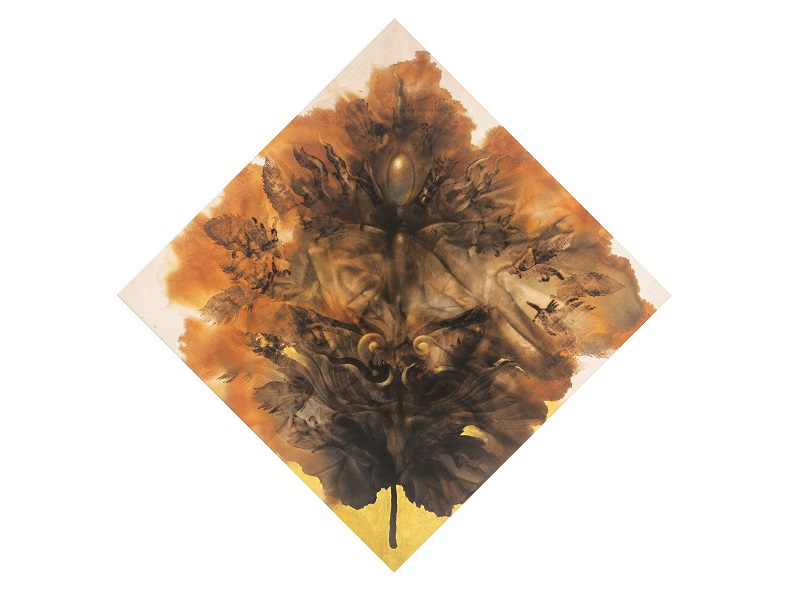
In terms of inspiration, the artist — who says he prefers to “paint” free hand without sketching ahead nowadays — draws strongly from nature, as well as Malay or Southeast Asian mythology and folklore. His style takes its cue from batik painting, albeit in a contemporarised context.
By experimenting increasingly with abstraction, Haafiz has found an ideal pairing for his pyrography style, as we see a nuance and softness that evokes Eastern mysticism vibes. He describes it as the process of creating the visual image of a soul.
“The element of fire is common within Malay culture. Unlike Western visual arts that have their landscape, figurative, abstract art, or Chinese art which is ink, landscape, calligraphy and pottery … the Malay art form draws predominantly from nature and folklore. Also, I am a silat practitioner, so being conscious of the essence of the soul, the roh, is the norm,” he observes.
saka_hitam.jpg
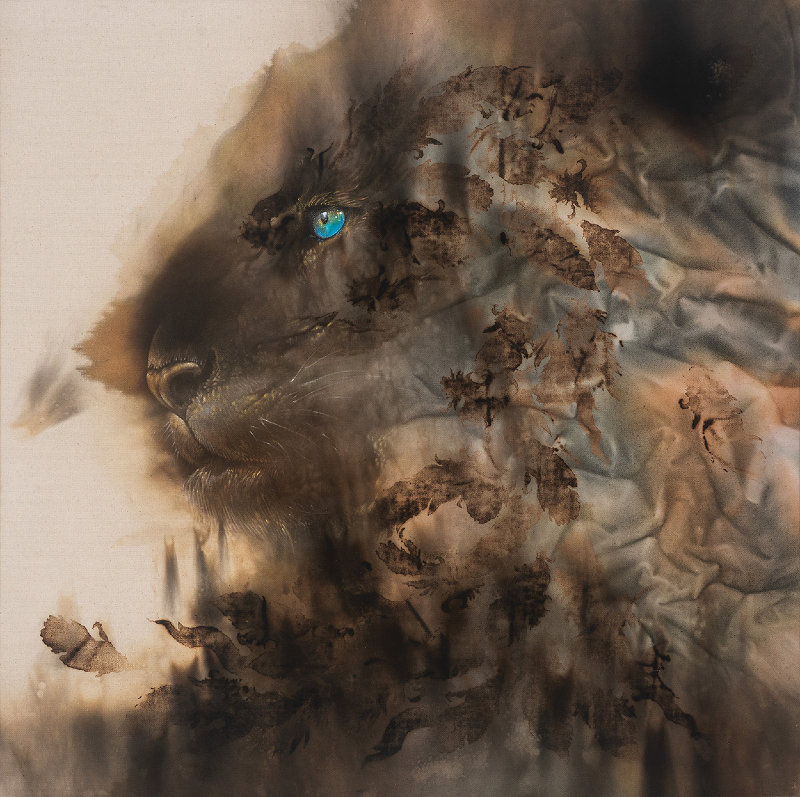
This is most obvious in two works: Buraq and Saka Hitam. The former, being the creature that carries Islamic prophet Muhammad up to the heavens, is traditionally forbidden to be portrayed. Haafiz says that is why he imagines the essence of it instead. The latter features the werecat, or harimau jadian, a shapeshifting mythical animal associated with black magic and witchcraft in Malay folklore.
But perhaps it is Haafiz’s figurative works that are the most emotive. In an older series, he created portraits with lines burnt onto the canvas with metal rods. The inspiration came from a contractor friend of his. “I wanted to incorporate an element of his work, which were the rods used in forming concrete pillars,” he shares. The Fall of Time (2015) is also a mark of time passing by, each burnt line signifying both visibility and invisibility, as life fades away gradually.
As we end our tour, the burning question is, why the fascination with fire? Haafiz smiles, “The key is the adrenaline. I like cooperating with fire, to let it create the work. The unpredictability and viciousness of it, the heat and distortive element attracts me. My role is to control it and play with it. It’s also learning about your limitations, to know where you can go and cannot go with it. Yet I see the possibilities within that — something so destructive — to turn it into something beautiful.”
Credit:
Videography: B&T Productions
Co-ordinator: Kong Wai Yeng
'AWAS', Core Design Gallery, 87 Jalan SS15/2A, Subang Jaya. Until March 15. Mon-Fri, 11am-6pm; Sat-Sun, noon-6pm by appointment. See here for more information.
This article first appeared on Feb 10, 2020 in The Edge Malaysia.


